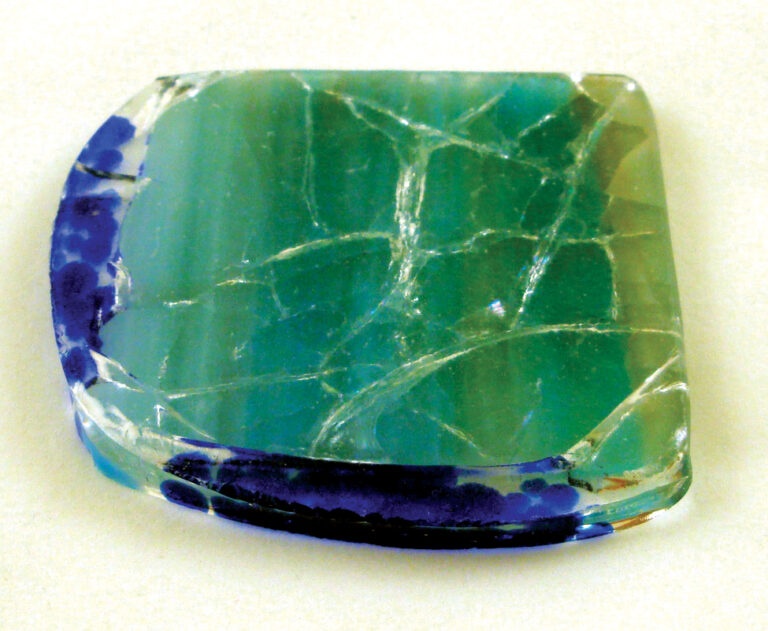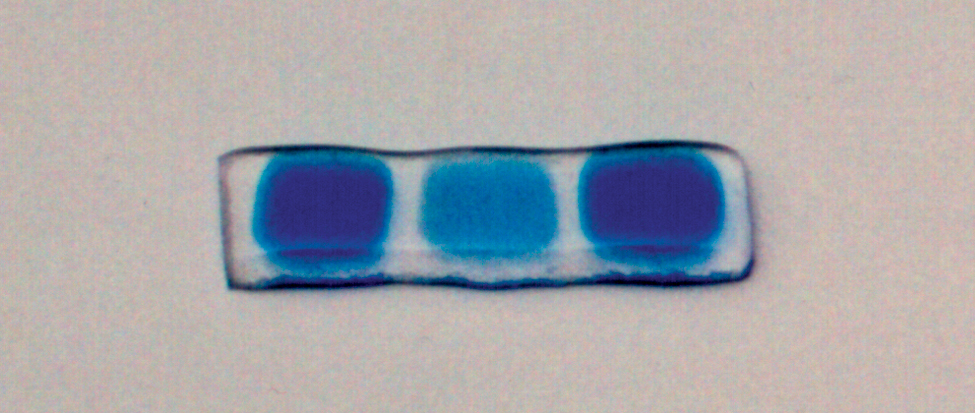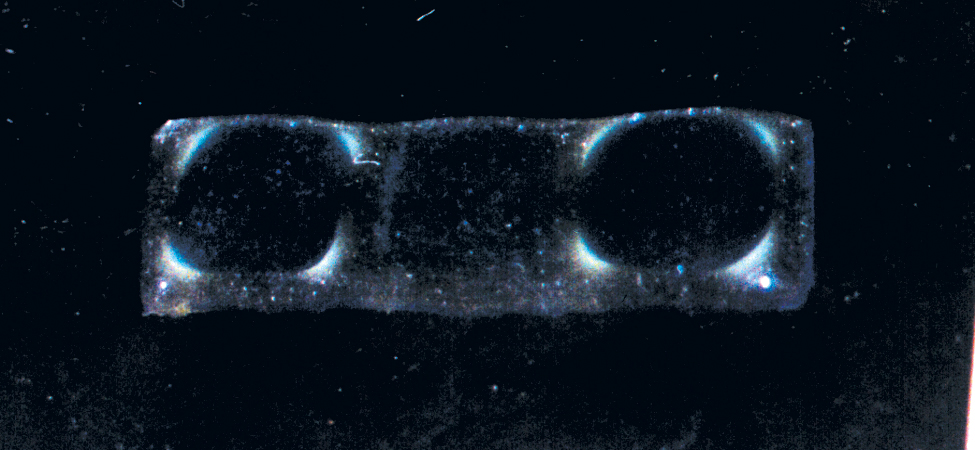What is this thing called COE?
Not all glass can be fused together.
Learning the basics of glass compatibility will help you understand
which glasses can be fused together and which can’t.

Unfortunately, you can’t just select any two pieces of glass and fuse them together. If you’re not careful, your glass will crack after the firing. The crack can be small, or it can be really severe, as in the photo.
When two glasses can be fused together, they’re said to be compatible. If you use glass that isn’t compatible, then you’re probably going to end up with cracks.
To better understand compatibility, it helps to remember that glass, like most materials, expands when it is heated. This change in density can be measured in a laboratory and results in a figure that glass artists call a Coefficient of Expansion, or COE.
Most Bullseye glass, for example, is said to have a Coefficient of Expansion of 90, and you will often hear glass artists refer to it as COE90 glass. Oceanside, which markets its glass under the brand name Spectrum, has a COE of around 96, while borosilicate glass has a 32 COE. Standard window glass, referred to as “float” glass by the glassmaking community, has a COE that is usually in the 84 to 87 range, while Effetre (Moretti) glass, commonly used for lampworking, has a 104 COE. These different glasses can’t be fused together without risking cracks due to incompatibility.
COE isn’t the only factor that determines whether or not two glasses are compatible. The glass’s viscosity, or “runniness” when fired, is also important.
If you’re not using glasses from the same manufacturer, glasses that have been “tested compatible” by the maker, then you’ll need to learn to do your own compatibility testing.
It’s pretty easy to do a compatibility test. Just cut small squares of the glass you want to test and fuse them on top of a piece of clear glass of known COE.
Then sandwich the fused glass between two sheets of polarized film. The sheets should be rotated so that they are perpendicular to each other. View the piece with light behind and you’ll see bright white stress areas where the glasses are not compatible.
You can buy polarized film direct from the Warm Glass website. Just click here.



